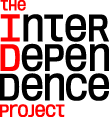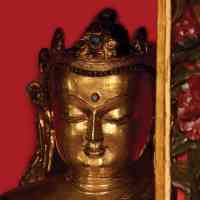
About the Meditation
Meditation session led by Tracy Cochran.
The guided meditation begins at 17:44.
For centuries Himalayan practitioners have used meditation to quiet the mind, open the heart, calm the nervous system, and increase focus. Now Western scientists, business leaders, and the secular world have embraced meditation as a vital tool for brain health.
Whether you’re a beginner, a dabbler, or a skilled meditator seeking the company of others, join expert teachers in a forty-five-minute weekly program designed to fit into your lunch break. Each session will be inspired by a different work of art from the Rubin Museum’s collection and will include an opening talk, a twenty-minute meditation session, and a closing discussion.
This program is supported in part by the Hemera Foundation with thanks to our presenting partners Sharon Salzberg, the Interdependence Project, and Parabola Magazine.


Related Artwork

Theme:Love
This sculpture is attributed to the hand of Choying Dorje, the Tenth Karmapa, who was head of the Karma Kagyu School of Tibetan Buddhism. An eccentric figure within the history of Tibetan art, the Tenth Karmapa possessed a highly individual style, looking to a range of traditions for inspiration, including ancient metalwork from Kashmir and Swat. These influences can be seen in this sculpture of the goddess Tara in the elliptical shape of the lotus petals that make up her seat and the striated pattern on her tight-fitting clothing, which closely models her form.
Other aspects of the Tenth Karmapa’s personal style apparent in this sculpture include the heavy plates of hair piled on the left side of Tara’s head and the plasticity of her ornaments, such as her tremendous earrings and the bulbous bobbles of her necklace. The Karmapa’s love of animals is often subtlety incorporated into his works. Here, a pair of birds can be found nestled in a leafy bower above Tara’s head.
About the Speaker

Tracy Cochran has been a student and teacher of meditation and spiritual practice for decades. She is the founder of the Hudson River Sangha, which is now virtual and is open to all. The link for her weekly meditations can be found on her website: tracycochran.org.
In addition to the Rubin Museum of Art, Tracy Cochran has taught mindfulness meditation and mindful writing at the New York Insight Meditation Center, as well as in schools, corporations, and other venues nationally and internationally. She is also a writer and the editorial director of Parabola, an acclaimed quarterly magazine that seeks to bring timeless spiritual wisdom to the burning questions of the day. Her writings, podcasts, and other details can be found on her website and on parabola.org.

